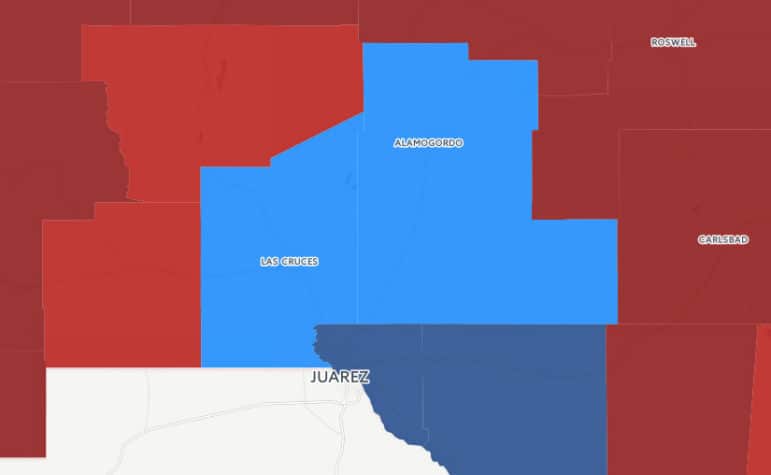
The Oregonian newspaper recently created a county-by-county map of gun deaths per capita across America from 2004-2010, based on data from the U.S. Centers for Disease Control and Prevention. Four counties in southern New Mexico and far west Texas had fewer gun deaths per 100,000 than the national average of 12. Counties with higher gun-death rates than the national average surrounded them.
COMMENTARY: With mass shootings becoming part of our norm in America, too many are gathering into the usual camps to argue.
One side yells, “We need tighter control of guns!”
“No!” the other shouts. “We need easier access to guns.”

Heath Haussamen
Few are listening to each other. Washington is, as usual, paralyzed.
An examination of deaths across America reveals that the truth is complex. The Paso Del Norte region, which includes my hometown of Las Cruces, upends conventional narratives.
The Oregonian newspaper recently created a county-by-county map of gun deaths per capita across America from 2004-2010, based on data from the U.S. Centers for Disease Control and Prevention.
Four counties – Doña Ana and Otero in southern New Mexico and El Paso and Hudspeth in far west Texas – had fewer gun deaths per 100,000 than the national average of 12. Counties with higher gun-death rates than the national average surrounded them.
Overall, New Mexico had 15.5 gun deaths per 100,000 people, including 10.28 suicides and 4.06 homicides. Santa Fe and Bernalillo counties had about 13.5 gun deaths per 100,000. San Juan County had 12.87. Grant County, at 23.63, was New Mexico’s worst.
Otero County, meanwhile, had 8.73 deaths per 100,000 people. Doña Ana County had 7.58. There were 6.94 gun deaths per 100,000 in El Paso and 5.77 in Hudspeth.
Those are not far from gun-death rates in Finland (3.64) and France (3.01). Many other developed nations have much lower rates – 0.26 in the United Kingdom and 0.06 in Japan, for example.
Still, there’s something unique about these four counties, at least by American gun-death standards.
They’re part of a semi-cohesive region that includes a bi-national metro area. On our side is El Paso, Texas – one of the safest large cities in America. On the other side, in Mexico, is the war-torn Cuidad Juárez.
These are a mix of Democratic and Republican counties. Two are urban. Two are rural. They have a heavy military presence in Fort Bliss, White Sands Missile Range and Holloman Air Force base.
They aren’t a mecca of economic opportunity. Las Cruces is in recession. Its 2014 estimated poverty rate was 23.1 percent, higher than the state’s 20.4 percent. El Paso’s 2014 poverty rate – 23.3 percent – was higher than Texas’ 17.6 percent.
Three rural, poor counties surround Doña Ana. Two, Luna and Sierra, have gun-death rates nearly twice as high as the third, Otero.
Most counties in New Mexico, Texas and California that share a border with Mexico had lower gun-death rates than our national average. Every Arizona county had a higher rate.
Half of New Mexicans own guns, compared to 36 percent in Texas and 32 percent in Arizona. Texas’ gun-death rate is below the national average. Arizona’s is higher than New Mexico’s rate and the national average.
The normal narratives don’t hold up here. Fewer guns don’t equal fewer deaths in Arizona, at least compared to Texas. More guns don’t equal more deaths in New Mexico, at least compared to Arizona.
Gun policies undoubtedly affect gun-death rates. So do a community’s economic health, poverty, access to quality education, societal tensions such as racism, and the effectiveness of its behavioral health system.
Working to understand why gun-death rates are lower in these four counties could benefit our entire nation. Clearly, solutions must be nuanced and perhaps tailored to individual communities.
We can do so much on the local and state levels. Instead of complaining about inaction in Washington, let’s get to work.